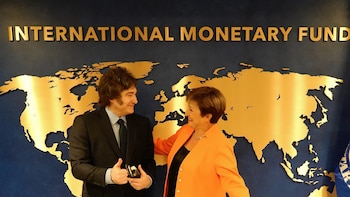
Leukemias are cancers of the blood that usually start in early forms of white blood cells, but some begin in other types of blood cells. They are classified as acute (fast growing) or chronic (slower growth) and if they start in myeloid or lymphoid cells.
Although they are not preventable, as is the case with about a third of cancer cases, they share many aspects, such as the importance of early detection and access to the most appropriate treatment for each type and stage of disease.
Acute myeloid leukemia starts in the bone marrow (the soft part inside certain bones where new blood cells are produced), but it usually passes quickly into the blood and sometimes spreads to the lymph nodes, liver, spleen, central nervous system (brain, and bone marrow) spinal) and testicles.
The World Day of Acute Myeloid Leukemia is commemorated today, April 21, in that context, the Argentine Myeloid Leukemia Association (ALMA) stressed that this disease represents a medical emergency that must be addressed as soon as possible, because it is progressing rapidly. With intensive chemotherapy or bone marrow transplantation, 40% of children under 60 who develop acute myeloid leukemia (AML) could be cured, although the prognosis worsens in cases older than that age.
Recently, during the United States National Comprehensive Cancer Network Conference (NCCN 2022), a study was released with strong data: cases of acute myeloid leukemia grew 35% in men and 8% in women between 2000 and 2019 in the Americas, Europe, Africa, Southeast Asia and the Western Mediterranean and Western Pacific regions. This means more than 16 million diagnoses worldwide and nearly 9 million deaths.

While the study did not explore the reasons for this increase, specialists argued that it could be attributed at least in part to improvements in the diagnosis and registration of this disease.
“These findings allow us to measure the impact of this complex disease, which unfolds quickly and cannot be delayed. Every hour counts before the diagnosis of this leukemia. That is why we insist that access to the appropriate treatment is available without delay or obstacles, it is essential that access policies by health system funders follow the pace of scientific innovation,” said Fernando Piotrowski, executive director of the ALMA association.
Warning signs
The most common are shortness of breath, bruising, fever, weakness and propensity to infection. As they are nonspecific, they do not help to quickly arouse suspicion and this disease progresses so rapidly that every day that passes until its diagnosis is critical.
“For many types of cancer, early detection offers a better prognosis, which is why mammograms, colonoscopies and prostate checks are recommended, to name a few,” explained Dr. María Marta Rivas, a hematologist and head of the Haematology Department at the University Hospital Austral.

This is different in the case of acute myeloid leukemia, “because of how it develops, there are no useful studies to discover it in the early stages, so the best way to find it is not to delay the medical visit in the face of any of these symptoms that attract attention,” said Dr. Rivas.
Leukemia is not a hereditary or contagious disease, although certain factors increase the risk of developing it. These are old age (although it can occur at any age), gender (more common in men), exposure to radiation, chemicals and industrial solvents, having had previous chemotherapy or radiation therapies, smoking, having had blood diseases such as myelodysplastic syndromes, and certain genetic birth disorders .
“Having any of these factors does not mean that a person will develop this leukemia. In fact, diagnoses are often not explained by any of these aspects and the disease develops without apparent cause,” said Dr. Rivas.
Treatments for this disease are intensive chemotherapy and bone marrow transplantation, although cure rates are lower than in other oncological and oncohematological diseases.
In addition, those who, due to their age or health condition, have chemotherapy contraindicated, have another option: the combined use of two drugs, which are approved and available in Argentina, proved to reduce the risk of death by 34% and increase survival by 50% more than if only one of them is used (14.7 months versus 9.6). Using them together, complete remission rates improve and patients live longer.
KEEP READING:
Últimas Noticias
Debanhi Escobar: they secured the motel where she was found lifeless in a cistern
Members of the Specialized Prosecutor's Office in Nuevo León secured the Nueva Castilla Motel as part of the investigations into the case

The oldest person in the world died at the age of 119
Kane Tanaka lived in Japan. She was born six months earlier than George Orwell, the same year that the Wright brothers first flew, and Marie Curie became the first woman to win a Nobel Prize

Macabre find in CDMX: they left a body bagged and tied in a taxi
The body was left in the back seats of the car. It was covered with black bags and tied with industrial tape
The eagles of America will face Manchester City in a duel of legends. Here are the details
The top Mexican football champion will play a match with Pep Guardiola's squad in the Lone Star Cup

Why is it good to bring dogs out to know the world when they are puppies
A so-called protection against the spread of diseases threatens the integral development of dogs




